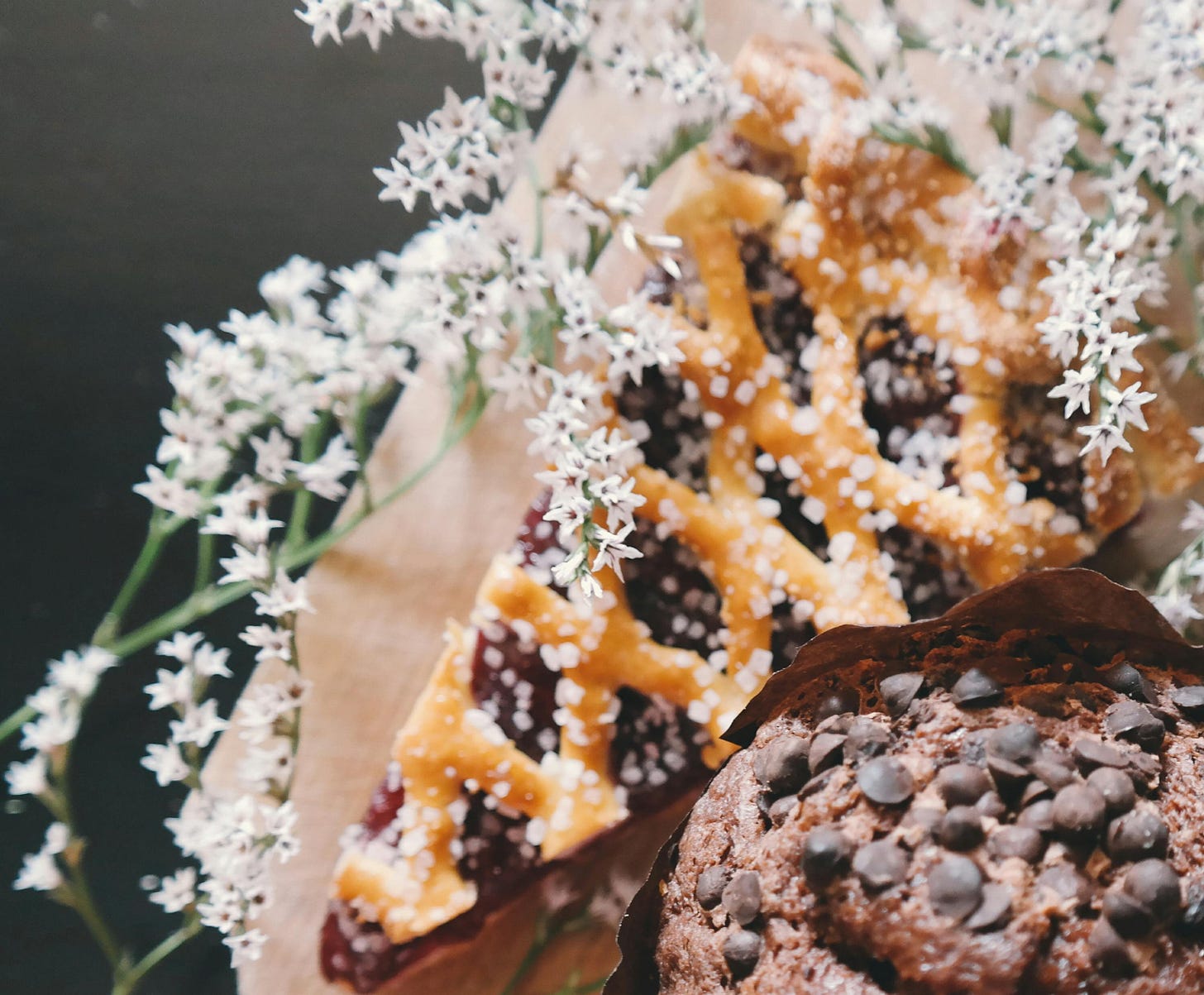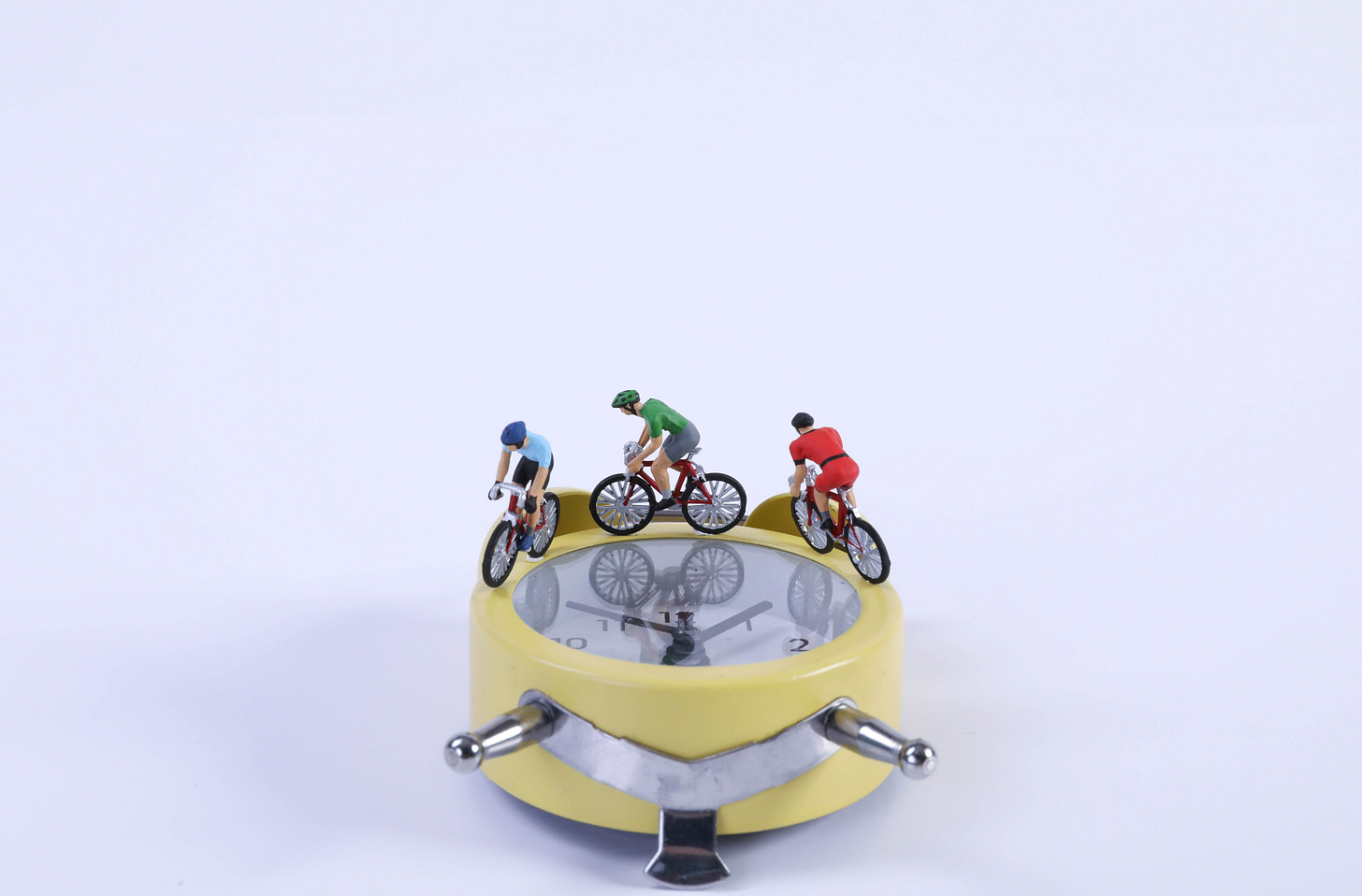Is there such a thing as a Belgian pie?
All about the vlaai.
This article was first published on November 5th 2024, re-published on November 27th 2024. The information is still the same, the order it was presented in re-arranged for clarity. At this point the Fall baking bundle isn’t available but Sarah’s holiday season baking book ‘The Festive Belgian Bakery - Holiday Edition’ is available on amazon and through Barnes and Noble in the US.
Before we dive in, a quick note to let you know we now have print copies available in both the US and the UK of the Fall baking bundle at $11/£10 including delivery and including a digital copy, send me a message or email for those. Digital copies on their own are also still available through the links below.
American Belgian pies
In my extra fact-checking research I came across something called a 'Belgian pie' made in the US. I was fascinated and slightly confused because it looked not a whole lot like anything I knew being Belgian and a baker. A pie made in the US, specifically in Wisconsin, where they were said to be quite famous.
Turns out it’s a very regional speciality from an area of Wisconsin where a group of Belgians settled in the mid-1800s. It’s a pie shaped like a disk made with a yeast-raised dough topped with fruit and cottage cheese. 1
I couldn’t find anything about the cottage cheese topping, the articles I read did say it was a common by-product on Belgian dairy farms which is interesting because I always associate cottage cheese with German food. Platte kaas, a smooth fresh cheese, is the kind of cheese I would associate with Belgian dairy making.
So that leads us to the question ‘is there such a thing as a Belgian Belgian pie?’.
Yes there is!
Introducing the vlaai /ˈvlaɪ̯/ !
It’s also quite seasonal since it’s, well, filled with fruit you get this time of year and, conveniently, also one of the recipes in the Fall baking bundle.
Made with a preserved or dried fruit filling and an enriched dough similar to a brioche but a bit less sweet and heavy, vlaaien have been made in Belgium since the Middle Ages.
They’re huge, flat, have a lattice lid and are very yummy.
The one in the digital baking bundle is made with dried prunes, its dark colour makes it a go-to choice this time of year for days where we celebrate and remember passed away loved ones. It’s also the vlaai of choice to serve after funerals.
You can find depictions of vlaai pies on various paintings from the period and it’s said that in 1189 Godfried the third van Leuven changed his mind about laying siege on the city of Sint-Truiden after the local population presented him with a vlaai which was described as having been made from an old, traditional recipe so we can assume the tradition goes back even further.2

They were an expensive product, fruit wasn’t cheap and hard to store so they would only be made for celebrations.
While you can now buy vlaaien year-round and just have a slice on a Sunday afternoon, they are still mostly associated with celebrations and gatherings of all sorts.
Vlaaien were served at weddings, for christenings, birthdays, when you get together with extended relatives to go to the fair in town and at funerals.
Often a few people, probably women, would bake the pies at home, even for big weddings! These days you’ll probably see them less often at weddings or christenings and only at Birthdays if there’s a larger crowd to be fed.
That’s real vlaai territory, the sort of family gathering that’s not too upscale like a wedding but has enough people there to warrant buying several vlaaien, each with a different filling so people can have a slice of a few different ones as the tradition dictates. These are big slices yet it’s totally acceptable to eat 2-3 slices of this sweet, bready pie in one sitting.
There are lots of different fillings to choose from.
You can get cherry, apple, apricot, prune or even gooseberry but there’s also a vanilla pudding one most popular in the province of Limburg.
There is also the smurf pie which you could expect to be filled with say, blueberries, for their blue colour but is in fact an apricot pie sometimes with a layer of baked-in pastry cream topped with a mountain of whipped cream and a heap of white chocolate shavings. It’s deliciously decadent for a humble pie. 3
The one vlaai that’s less associated with celebrations and more with Sunday afternoons is the one with a rice pudding filling.
It’s sweet, firm and has a distinct grid pattern on top. It’s never covered with a lid but can sometimes be decorated with a dollop of whipped cream although that’s seen as a quite extravagant. It also has a slightly different base, it’s not as bready soft as a fruit vlaai, it’s more like the whole pie case is made from a soft bread crust without being chewy, it has that caramelised sense and firmness to it.
Cycling races are very popular in Belgium and often held on a Sunday afternoon. People will go and watch a local race or catch the big ones on TV.
The 1-2 person size rice pie is famous for being the fuel of choice of celebrated professional cyclist Briek Schotte in the 1940s and 50s, he led cycling teams for decades after he stopped competing. Rice pies became a common staple for various cycling teams including US postal who would commission a baker in the Belgian town of Izegem to bake rice pies for the team in the 90s!4
While the rice pie is technically a vlaai, it’s more commonly called a tart, ie. ‘rijsttaart’ or ‘tarte au riz’, in most places in Belgium. One exception is the province of Limburg famous for its great vlaaien where it is called a rijstevlaai.
Limburg also successfully applied for a Protected Geographical Indication (PGI) allowing for the protection of the label ‘Limburgse vlaai’ ensuring pies carrying the quality label of the province’s name can only be made in Limburg itself.5
Lierse, Aalsterse and Oost-Vlaamse vlaai
This is an interesting one because they’re also called vlaai but aren’t filled with fruit at all. Or have a yeasty dough crust. They are made from rusks, old bread and/or soft gingerbread blended with butter, milk, eggs and candi syrup6 and baked in a pie tin. They’re all named after the towns or areas they’re originally from7. It’s a way of using up old bread but rather than a bread-and-butter pudding where it’s slices of bread dipped in an egg/milk mixture here everything is mashed up and baked.
So what about that American Belgian pie?
Well, they don’t have a raised edge or a lid and that cottage cheese topping. I couldn’t find much about the roots of the pie but it makes sense that these people went over and adjusted the way they made their vlaai in their original Belgian village in the early 1800s after their arrival in the US.
PS. The digital Fall baking bundle is still available! We’ve got a recipe for that vlaai pie, Brussels waffles, apple loaf cake… We’ve now also got print copies available for both the US and the UK at $11/£10 each, including delivery. Send me a message if you’d like one of those. Digital copies through the below links.
PPS. In Belgium we’ve got this thing we all say on a voting day, we tell each other ‘allee, voor de goei, e’, or ‘make sure you’re voting for the good ones’. No-one specifies who the good ones are but we are asking each other to vote for them anyways. Voting is also mandatory and confidential. With quite a few parties to choose from, it’s not uncommon for family members to vote for different parties and candidates.
That’s it for now, we might still do an article on the tradition of eating sweet treats from the bakery with family or friends on a Sunday afternoon but after that, we’re heading straight to, oh yes, the holiday season🎄.
https://sitesandstories.wordpress.com/2018/10/15/belgian-pies/
https://www.flourpot-llc.com/belgian-pies
https://www.flourpot-llc.com/_files/ugd/83292e_cd3eb64560a7400780541a4eac1c75e2.pdf
https://dare.wisc.edu/words/quarterly-updates/quarterly-update-4/belgian-pie/
https://therresa.tripod.com/index-2.html
https://nl.wikipedia.org/wiki/Limburgse_vlaai , the earliest mentions of vlaai are found with Germanic tribes who would cook dough on hot rocks and pour honey or fruit/fruit juices over the top.
The smurf pie was named after the Smurfs because they were so popular at the time, Father Abraham’s song about the Smurfs even made it into international hitlists and was simply a way to market a new pie rather than anything to do with its looks. Think too much about it, if it was blue like Smurf ice cream, does that mean we’re implying it’s made with actual Smurf filling?
https://www.broodenbanket.be/smurfentaart-uitvinding-uit-heusden-zolder/
https://servicekoers.be/verhalen/briek-schotte-brood
https://servicekoers.be/verhalen/bevoorrading-tijdens-de-tour
https://servicekoers.be/verhalen/het-meesterschap-van-bahamontes
https://servicekoers.be/verhalen/roger-de-vlaeminck-suiker
Sandwiches, light brioche style buns, with either ham, cheese or jam were a staple in the cycling sport as well. Schotte also once had his father bring him a raisin loaf before the start of a competition which he claimed helped him win the race together with the candle his mother had lid on his behalf.
https://www.vlaanderen.be/vlam/press/limburgse-vlaai-erkend-als-beschermde-geografische-aanduiding
The provinces of Limburg are big fruit growing areas so they would use leftover fruit in random bits of dough to make pies making them commonly eaten by locals and still very popular today. There is a province of Limburg in Belgium as well as the Netherlands as the area stretches across the country border.
Candi syrup is a dark, almost black syrup and a by-product of the beet sugar refinery process. It’s commonly used in speculoos/speculaas biscuits, Belgian gingerbread, beer and also poured on pancakes. In the US and UK it’s sold by brewery supply stores for making Belgian-style beers, some times imported from Belgium, other times made locally. It has a slightly sulphuric taste but is much sweeter and milder than molasses. Candi sugar is also a beet sugar refinery by-product and often enjoyed in the same way as candi syrup. https://www.streekproduct.be/producten/kandijsuiker-kandijcassonade-en-kandijsiroop
https://www.streekproduct.be/weetjes/oost-vlaamse-vlaaien
Please use your browser’s built-in translation option to read the pages in Dutch linked to above. Hover over an empty bit of the page with the cursor, right-click and select ‘translate to English’.
I’m taking part in
‘s essay club.

In New Zealand we have Belgian biscuits, resembles nothing Ive ever seen in Belgium 🤷♀️ anyway, I'm hungry now and craving vlaai!